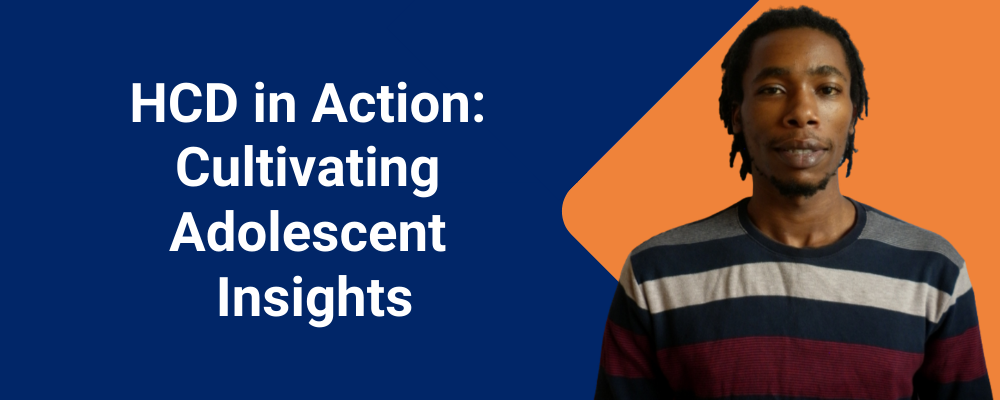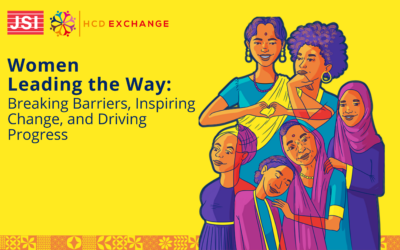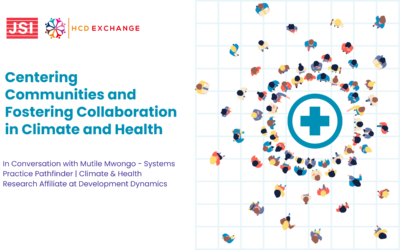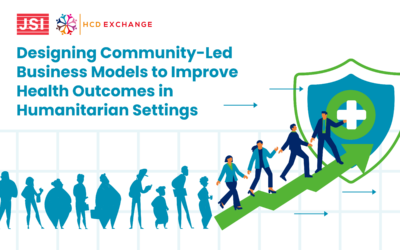
My name is John Maina, and I am the Measurement and Evidence Associate in the HCDExchange Youth Leadership Hub (YLH). I am also a community professional who has been working with young men who have sex with men (YMSM) for the last five years. I work across physical and digital outreach, measurement and evaluation and project management.
I am well conversant with the Ministry of Health Measurement and Evaluation tools and processes used in the Kenyan health system, especially SRH related. I got into the HCD space through my own research on design thinking to improve experiences provided by digital outreach workers and I have been in it for nine months.
I was a panelist on the HCDExchange June Community Call where we discussed how to use adolescent insights in HCD and ASRH programming. My fellow panelists included a designer, implementer and a gender specialist and we covered topics around HIV testing, contraceptives and menstrual health. We shared anecdotes from the field to paint the picture on the Adolescent Insights landscape. The HCDExchange learning team also shared a summary of insights collected from across African and Asian countries, to highlight various HCD related learnings all over the world.
There was a fiery chat and discussions from participants and panelists which goes to show how interesting a topic AI is to different groups of people involved in ASRH and/or HCD.
From the call, insights from Indonesia on periods show the importance of geographical contexts that can be brought out by HCD. What was interesting is that they were different from those identified earlier by HCDExchange but continued the theme of a deep and localised understanding of adolescent lives in an intentional manner. The inclusion of boys, parents and teachers in understanding the lives of young girls was a unique approach to menstruation for me. This was also highlighted in the importance of engaging the parents of girls intentionally to make safe space for conversations around menstrual health.
The process of generating insights with HCD is more intensive to fully understand more than surface-level factors when it comes to developing interventions to implement. This becomes important especially as you attempt to differentiate the prevailing situation from the root cause of issues.
This was beneficial to our experience with the Almasi challenge, where we co-created new user journeys for young men who have sex with men (YMSM) accessing HIV testing services.
This included tweaking our previous call to action to reflect YMSM desires and reducing the number of service providers to add a layer of confidentiality and privacy. Also, field workers got intimately involved with the details of the problem including the YMSM profile, the various iterations of solutions and the indicators the team would be tracking. This rigorous exercise refreshed our current understanding of YMSM in Nairobi and Kisumu by giving us qualitative and quantitative evidence on where YMSM wanted to access SRH information, communication channels of preference and HIV Self Testing versus clinic testing preference.
Across the three areas above we got a lot of information that was missing in our organisational understanding of YMSM. For instance we had used social media for outreach but had not used an influencer in the past – apart from internal micro-influencers. After understanding that YMSM held specific influencers with high regard we engaged one who ended up contributing to 10% of YMSM subscribing to our digital SRH campaign.
One important lesson I took away was to immerse oneself in the surrounding environment for populations you are designing for – this is the truest form of displaying real empathy as a designer or programmer. This ensures that there’s a lot of familiarity with all the details of a young person’s life which ranges from parental, peer, religious, pop culture, and even environmental influence. These insights seem to be uniquely local in a way that cannot be simulated through a simple questionnaire or a few Key Informant Interviews with community representatives.
This process, while very important in ensuring more current adolescent insights are generated within programmes, requires a lot of intentionality, resources and willingness to fail at first but it guarantees feasible ideas that are self evident to all.
Two key questions for me remain:
- How do we make the process of Adolescent Insights generation less costly for programmes with low funding?
- How can this be integrated into the existing practices of needs assessment and planning with the communities we serve?
John Maina is the Measurement and Evidence Associate in the HCDExchange Youth Leadership Hub (YLH). Learn more about the Youth Leadership Hub here.
Join the discussion on John’s reflections on the HCDExchange Community Learning Forum.We’d love to hear your thoughts!




